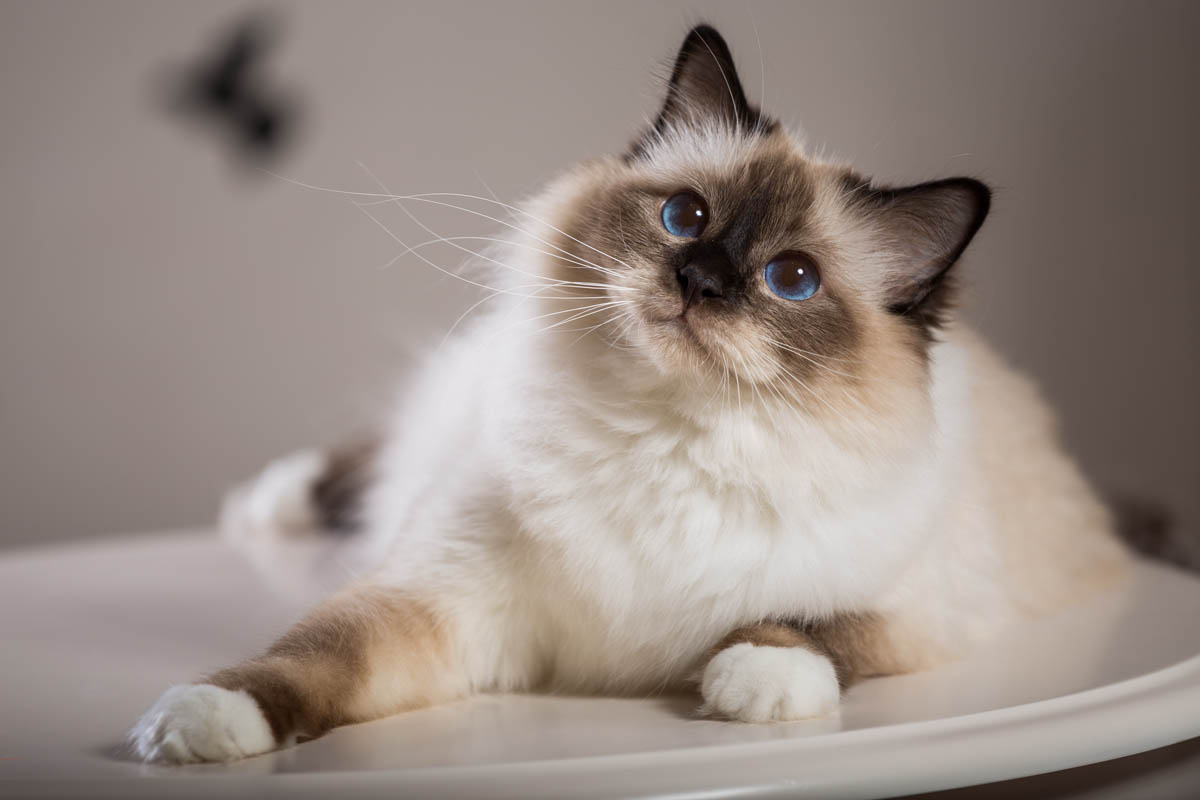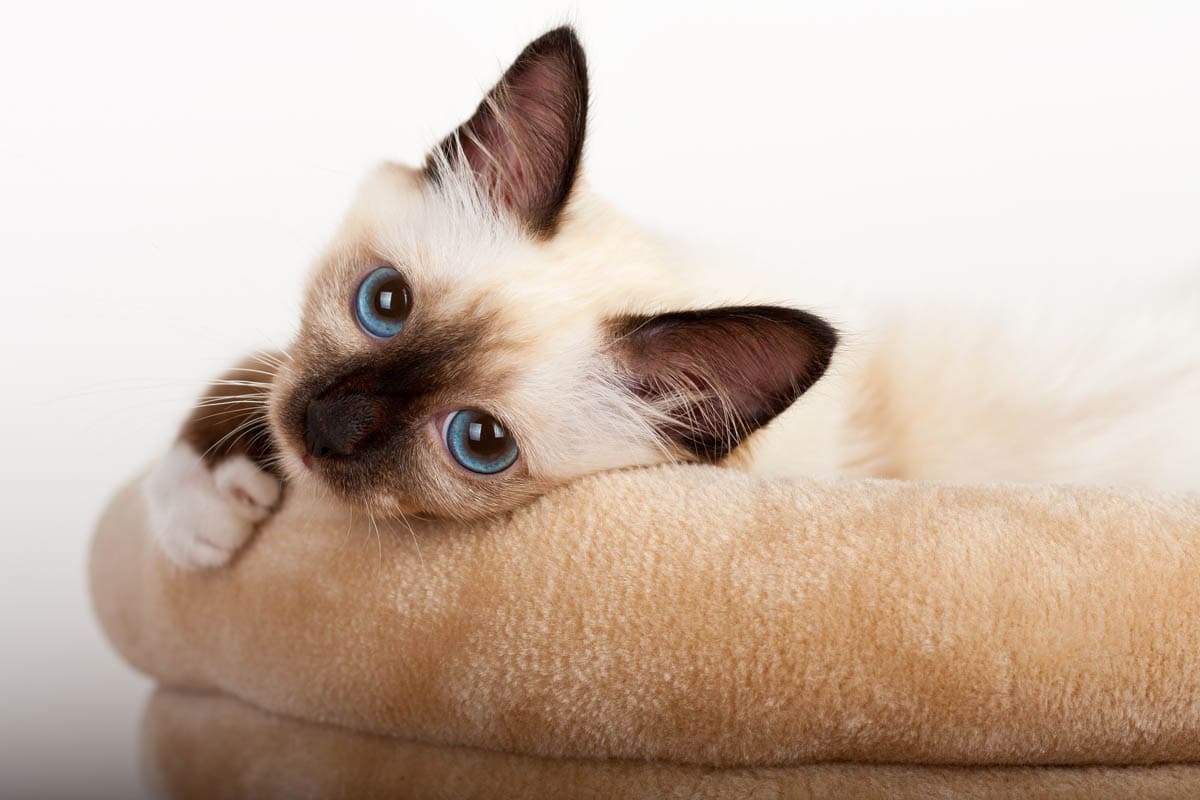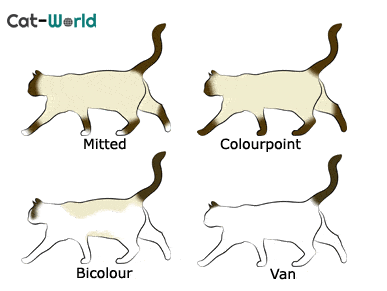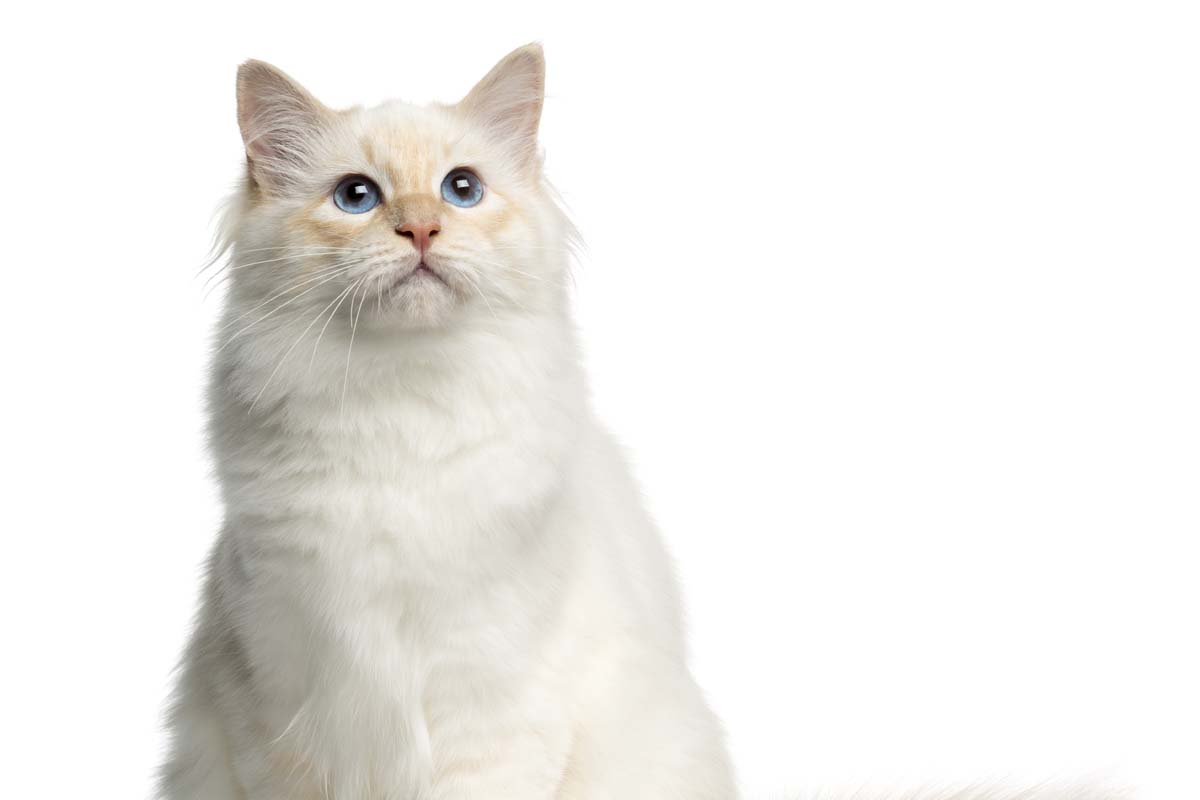Birmans at a glance
|
About

About
Also known as the Sacred Cat of Burma, the Birman cat is an ancient breed of cat with a striking pale coat with contrasting dark points, white gloves on the feet and stunning blue eyes.
The actual background is shrouded in mystery, however, are many legends as to the breed’s origins.
Legendary history:
The most famous of which is that there was a colony of longhaired, yellow-eyed, white cats living in a Burmese monastery as the guardians of the Temple of Lao Tsun. The golden goddess of the temple Tsun-Kyan-Kse was said to have deep blue eyes. Every night the head priest Mun-Ha would kneel and pray in front of the goddess, a cat by the name of Sinh by his side. One night Siamese invaders took over the temple killed the priest. Sinh stood guard over the body with his front paws on Mun-Ha’s head. It is said his fur took on a golden colour, and his eyes turned blue. The cat’s paws, which had touched the priest’s head, remained white, as a symbol of purity.
Factual history:
Desmond Morris speculates in his book Cat Breeds of the World that the reality is there likely was a colony of longhaired white cats who mated with Siamese cats producing longhaired, pointed offspring.
Arrival in Europe
In 1919 a pair of founding cats who consisted of a male called Madalpour and a pregnant female called Sita was sent to France (some suggest the pair were stolen). Sadly the male died during the journey; however, Sita survived and produced a litter of kittens. One kitten was named Poupee de Madalpour (Poupee), who was bred to Siamese or Siamese type cats (Laotian Lynx) and is considered the founder of the modern-day Birman breed. The French Feline Federation recognised the breed (called Sacre de Birmanie) in 1925.
The first Birman arrived in the USA in 1959 and Britain in 1965. The Cat Fanciers Association in America recognised the Birman in 1967.
Appearance

The Birman is a moderate and well-proportioned cat who does not reach full maturity until three years. The dominant feature of this breed is the pure white paws. On the show bench, the white paws are known as gloves while the back paws are socks.
The head is round with full cheeks and a Roman nose, ears are set high on the head and at a slight angle and the oval eyes are a deep blue.
The Birman’s coat is soft and silky, with very little undercoat, and a golden-fawn in colour with the addition of dark points and the characteristic white paws. The paws are white due to the white gloving gene, which is unique to the breed and is different from the white spotting gene, which is responsible for the white feet on the mitted Ragdoll.
Colours:
Birmans come in several colours including the traditional four-pointed colours; seal, blue, lilac, and chocolate as well as red, cream, tortie, in addition to these colours, the Birman also can come with tabby (lynx) points
in the above colours.
Personality
Birmans are a sweet-natured cats, words used to describe them include gentle, playful, even-tempered, affectionate, intelligent, quiet and faithful.
Birmans love people and can form a close bond with one particular family member. They don’t do well if left alone for long periods. Consider two cats if you are out of the home for long periods.
A quiet and laid back breed of cat, the Birman is in your face like some breeds of cat. They are an ideal companion for single people, families, retirees and homes with children and other pets.
Care
The semi-longhair coat requires regular grooming to remove loose hairs, once or twice a week should be enough.
Birman cats should be indoor only, preferably with access to a safe enclosure.
All cats need dental care, which may be with a cat toothbrush and toothpaste or feeding raw chunks of steak and raw chicken necks.
Annual veterinary checks to evaluate the health of your Birman, which increases to twice a year once the cat reaches seven years.
Health
The Birman cat is a healthy breed of cat, but diseases the breed can be prone to include:
- Hip dysplasia
- Hypertrophic cardiomyopathy
- Hairballs
- Myelodysplasia
Frequently asked questions
Are Birman cats friendly?
Yes, Birman cats are known to be a loving and friendly breed of cat.
Do Birman cats shed a lot?
The Birman does not have an insulating undercoat like other breeds and tends to shed less.
What’s the difference between a Birman and a Ragdoll?
Like the Birman, Ragdoll cats are a medium to large, slow-maturing breed. The Birman coat pattern is always pointed, with white paws. The Ragdoll pattern has four variations, pointed, van, mitted and bi-colour which are illustrated below.

Are Birman cats high maintenance?
Not especially so, although the semi-long coat requires a daily brush.
Are Birman cats hypoallergenic?
There is no evidence to suggest the Birman is hypoallergenic.

